Chanukah
Chanukah, the Festival of Lights, is observed for eight days and nights. A unique candelabrum, the nine-branched Chanukah menorah or chanukiah, is used for the Festival. The Shamash (attendant or servant) is used as an additional light for kindling the Chanukah lights and it is given a distinct location (above or below the rest). Kindling of the lights is the pivotal act on Chanukah; the first light on the right is lit on the first night, and then every subsequent day an additional one is lit. In this manner, all eight lights are lit on the eighth day, thus symbolizing the continual burning of oil in the Temple after the victory of the Maccabees. After kindling the lights, the hymn “HanerotHalalu” is recited, which lists the norms for kindling the Hanukkah lights and manners of conduct while they are burning.
Chanukah is a celebration of the victory of the Maccabees over the Greek-Syrian army led by Antiochus, and of the rededication of the Second Temple that was desecrated during Greek-Syrian occupation. The miracle of Chanukah consists in the fact that the Chanukah lights burned for eight days and nights, even though the batch of oil was sufficient for only one day. Hanukkah is a joyous holiday, especially for children. Traditionally food is fried in oil, such as doughnuts and latkes. All members of the family play the dreidel game (Sevivon in Hebrew), and the old custom of giving pocket money to children has changed into giving gifts. |
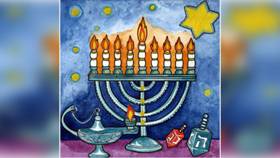 |
TuB`Shvat
TuB`shvat is celebrated on the 15th day of the month of Shevat, i.e. late January or early February. The Sephardi also call it Frutas.
TuB`shvat celebrates the New Year of the Trees and it is one of the four New Years mentioned in the Mishnah. Traditionally, trees are planted, and fruit, figs, dates and almonds are eaten. Almond trees blossom in Israel on TuB`shvat. |
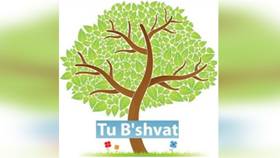 |
Purim
Purim is celebrated on the 14th of Adar according to the Hebrew calendar, i.e. late February or early March.
Purim is the most joyful Jewish holiday. As tradition dictates, the story of Queen Esther is read from the Book of Esther (Megillat Esther in Hebrew). The Megillah is handwritten on a parchment in the form of a scroll. It is often housed in a wooden or metal case. Sometimes the cases are made of silver or in delicate filigree technique. It is an old Jewish custom, while reading the story, to make noise by the use of specially made wooden noisemakers, or laspaletas in Ladino, when the name Haman, the antagonist of the story, is mentioned. Moreover, it is customary to organize masquerades, give charity to the poor, and read special prayers and the Megillat Esther in synagogues.
The story of Esther tells that Haman, the royal vizier, planned to exterminate the Jews. Queen Esther, Jewish by origin and second wife to King Ahasuerus, with the help of her uncle Mordecai, manages to reveal the plan and save the Jewish people. She was the first Jewess that saved the Jewish people from annihilation.
The name of the holiday comes from the Hebrew word pur which means lot – the story tells that Haman cast lots to decide on the date on which to exterminate the Jews. |
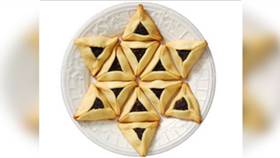 |
Pesach
Pesach begins on the 14th day of the month of Nisanaccording to the Hebrew calendar, i.e. March or April. Pesach is one of the three Pilgrimage Festivals – on Pesach the ancient Jews made pilgrimages to Jerusalem and offered sacrifices. Pesach is also called the Festival of Spring (Hag Aviv in Hebrew) due to the fact that it is always in spring, and the Festival of the Unleavened Bread (Hag HaMatzah in Hebrew) because only unleavened bread is eaten. Pesach commemorates the Exodus from Egypt.
Seder is a special religious ritual that takes place in Jewish homes on the first two nights of the festival. The word seder in Hebrew means order, and it signifies the strict order of the festival dinner, the recital of prayer and the reading of the Haggadah.
During the dinner, the HaggadahShel Pesach is read and four glasses of wine are drunk. The Passover Seder plate (keara in Hebrew) contains special dishes that symbolically recall the slavery of the Jews and their Exodus: matzo (unleavened bread), chicken wing and egg, maror (bitter herbs that symbolise the bitter life of the Jews when they were slaves), charoset (mixture of walnuts, fruit, spices and wine), carpas (celery and parsley) and chaseret (horseradish as spice of the meat or fish, and vinegar for the herbs).
The Haggadah recounts the events relating to the festival, the history of the arrival of the Israelites in Egypt and their Exodus, the need of the Passover sacrifice during the Second Temple, and the use of matzo and bitter herbs. The Haggadah contains excerpts of the Torah, midrash, old legends and stories, discussions and prayer. |
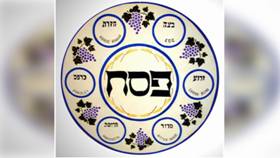 |
Yom HaShoah
Yom HaZikaronlaShoahve-laG'vurah (יום הזיכרון לשואה ולגבורה ), "Holocaust and Heroism Remembrance Day", known colloquially in Israel and abroad as Yom HaShoah (יום השואה ) and in English as Holocaust Remembrance Day, or Holocaust Day, is observed as Israel's day of commemoration for the approximately six million Jews who perished in the Holocaust as a result of the actions carried out by Nazi Germany and its accessories, and for the Jewish resistance in that period. In Israel, it is a national memorial day. It was inaugurated in 1953, anchored by a law signed by the Prime Minister of Israel David Ben-Gurion and the President of Israel Yitzhak Ben-Zvi. It is held on the 27th of Nisan (April/May), unless the 27th would be adjacent to Shabbat, in which case the date is shifted by a day. In other countries there are different commemorative days. |
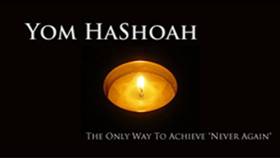
|
Yom HaZikaron
Yom Hazikaron (יום הזיכרון , Day of Remembrance) (in full Yom Hazikaronl'ChalaleiMa'arachotYisraelv'l'NifgaeiPeulotHa'eivah Hebrew: יום הזיכרון לחללי מערכות ישראל ולנפגעי פעולות האיבה , lit. "Day of Remembrance for the Fallen Soldiers of Israel and Victims of Terrorism") is Israel's official Memorial Day. The national observance was enacted into law in 1963. While Yom Hazikaron has been traditionally dedicated to fallen soldiers, commemoration has now been extended to civilian victims of political violence, Palestinian political violence, and terrorism in general. |

|
Yom HaAtzma`ut
Yom HaAtzma`ut( יום העצמאות - Yōmhā-ʿAṣmāʾūṯ lit. "Independence Day") is the national day of Israel, commemorating the Israeli Declaration of Independence in 1948. It is celebrated on 5th of Iyar according to the Hebrew calendar. Yom HaAtzma`ut is preceded by Yom HaZikaron, the Israeli Fallen Soldiers and Victims of Terrorism Remembrance Day. |
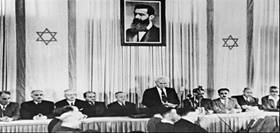
|
Lag B`Omer
Lag B`Omer (Hebrew: ל״ג בעומר ), also known as Lag LaOmer, is a Jewish holiday celebrated on the 33rd day of the Counting of the Omer, which occurs on the 18th day of the Hebrew month of Iyar.
This day marks the hillula (celebration, interpreted by some as anniversary of death) of Rabbi Shimon bar Yochai, a Mishnaic sage and leading disciple of Rabbi Akiva in the 2nd century, and the day on which he revealed the deepest secrets of kabbalah in the form of the Zohar (Book of Splendor), a landmark text of Jewish mysticism. This association has spawned several well-known customs and practices on Lag B`Omer, including the lighting of bonfires, pilgrimages to the tomb of Bar Yochai in the northern Israeli town of Meron, and various customs at the tomb itself. |
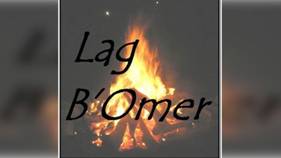
|
Yom Yerushalayim
Jerusalem Day (Hebrew: יום ירושלים , Yom Yerushalayim) is an Israeli national holiday commemorating the reunification of Jerusalem and the establishment of Israeli control over the Old City in June 1967. The Chief Rabbinate of Israel declared Jerusalem Day a minor religious holiday to thank God for victory in the Six-Day War and for answering the 2,000-year-old prayer of "Next Year in Jerusalem".
The day is marked by state ceremonies, memorial services for soldiers who died in the battle for Jerusalem, parades through downtown Jerusalem, reciting the Hallel prayer with blessings in synagogues, and saying the PsukeiZimra of Sabbath and High Holidays. |
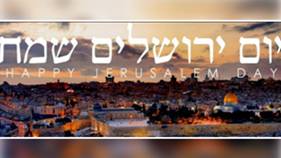
|
Shavuot
Shavuot is celebrated on the 6th day of the month of Sivan according to the Hebrew calendar, i.e. late May or early June. It is the second of the three Pilgrimage Festivals.
Shavuot commemorates the anniversary of the day when God gave the Torah to the Israelite nation assembled at Mount Sinai.Shavuot is also connected to the harvest. In ancient times, the barley harvest took place during Pesach, while the harvesting of the wheat was during Shavuot.
Dairy foods are traditionally served on Shavuot. In Sephardic communities, special pastry, known as Monte di Sinai, is made of milk and raisins. Also, in Sephardic synagogues, men and young boys take the Torah out of the synagogue, and then the boys, holding it in their hands, make seven circles around the synagogue, an act that commemorates the day when God gave the Torah to the Israelites. |
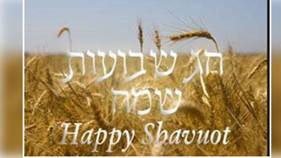
|
Tisha B`Av
TishaB'Av (help·info) ("the ninth of Av"תשעה באב or ט׳ באב ), is an annual fast day in Judaism which commemorates the destruction of the First and Second Temples in Jerusalem and the subsequent exile of the Jews from the Land of Israel. The day also commemorates other tragedies which occurred on the same day, including the Roman massacre of over 100,000 Jews at Betar in 132 CE. Instituted by the rabbis of 2nd-century Palestine, TishaB'Av is regarded as the saddest day in the Jewish calendar and a day which is destined for tragedy.
TishaB'Av falls in July or August in the Western calendar.
In addition to the basic five prohibitions, all pleasurable activity is forbidden. The Book of Lamentations which mourns the destruction of Jerusalem is read in the synagogue, followed by the kinnot, a series of liturgical dirges which lament the loss of the Temple and Jerusalem. |
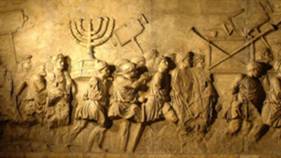
|
Rosh HaShana
Rosh HaShana (head of the year in Hebrew) is observed on the 1st and 2nd day of the month of Tishrei, i.e. September, and marks the start of the New Year according to the Hebrew calendar. Unlike other Jewish holidays, which are joyous in character, Rosh HaShana and Yom Kippur express profound solemnity and moral responsibility. These holidays are connected with the Days of Awe (YamimNoraim in Hebrew) when man faces heavenly judgement. Rosh HaShana represents the separation between the old and the new year, when Jews bid farewell to the old year by recalling their good and evil deeds. They embrace the good ones, and accept the evil ones in order not to repeat them in the New Year.
The customs for Rosh HaShana symbolize man’s insistence on a fertile year. Thus, a traditional greeting for Rosh HaShana is “Shana Tova”, which means good year in Hebrew, or “Shana Metukah”, sweet year. Traditionally, the New Year dinner is supposed to start with something sweet, for instance an apple dipped in honey.
Rosh HaShana is announced by blowing the shofar, an ancient musical instrument made from a horn from the Bovidae family, except from a cow or calf. |
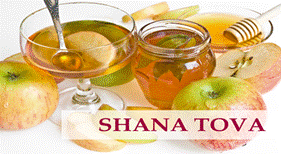
|
Yom Kippur
Yom Kippur is observed on the 10th day of the month of Tishrei and it is a holiday of atonement, repentance and forgiveness. It is observed with a 25-hour period of fasting and intensive prayer. Yom Kippur completes the 10-day period of repentance that starts on Rosh HaShana.
Services on Yom Kippur start with the prayer KolNidre that is chanted in synagogues before the beginning of the evening service. Dating back to the Medieval Ages, it has been charged with emotional undertones, thus creating a dramatic introduction to Yom Kippur. The prayer shawl talit is worn during the evening prayer and this is the only evening service throughout the year during which it is worn. Yom Kippur ends with Neila, the concluding service, and the blowing of the shofar marks the completion of the fast. |
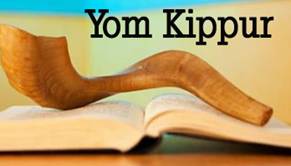 |
Sukkot
Sukkot is celebrated on the 15th day of the month ofTishrei according to the Hebrew calendar, i.e. late September or early October. It is one of the three Pilgrimage Festivals (ShaloshRegalim in Hebrew). On these Festivals, the ancient Jews made pilgrimages to Jerusalem so that they could participate in festivities and offer sacrifices at the Temple.
Sukkot begins on the 5th day after Yom Kippur and changes the manner of celebration – from the solemn celebration of Yom Kippur to the cheerful celebration of Sukkot. It lasts seven days, out of which only the first day is celebrated as a full festival with prayer and holiday meals.
The Hebrew word sukkot is the plural of sukkah, which designates booth or tabernacle. The meaning of the holiday of Sukkot is both agricultural and historical; from a historical perspective, Sukkot relates to the forty years the Jews wandered in the desert after the Exodus from Egypt. From an agricultural perspective, it is an expression of gratitude for the autumn harvest.
The sukkah is supposed to have at least three sides, while the fourth one may be open. It is made of sticks, palm tree branches, leaves and reeds. The roof is temporary and made of branches to let in the sunrays while allowing a view of the stars at night. Meals are served in the sukkah during the festival and many people sleep there as well. |
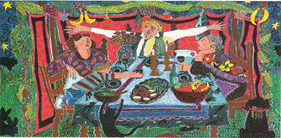
|














